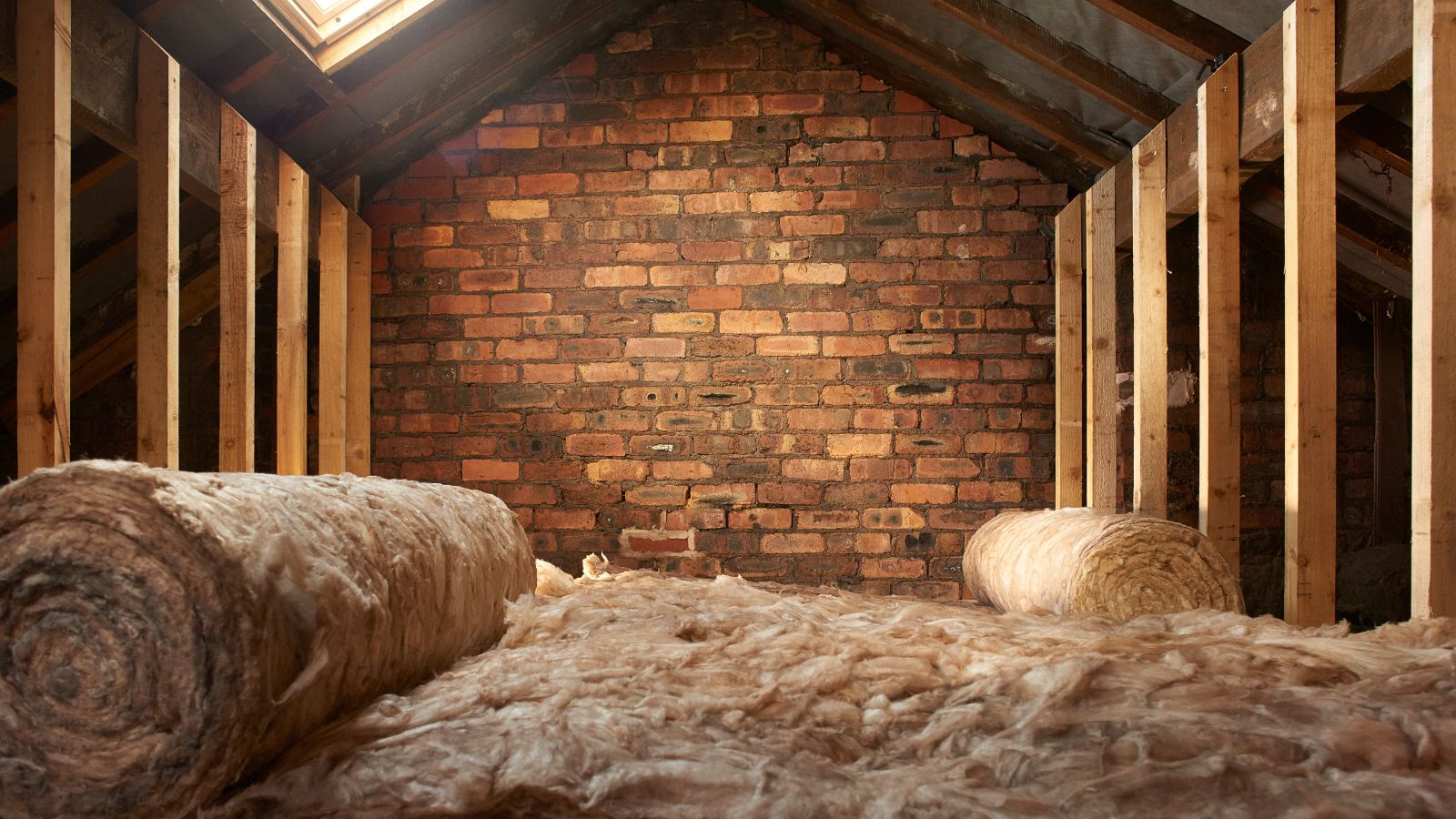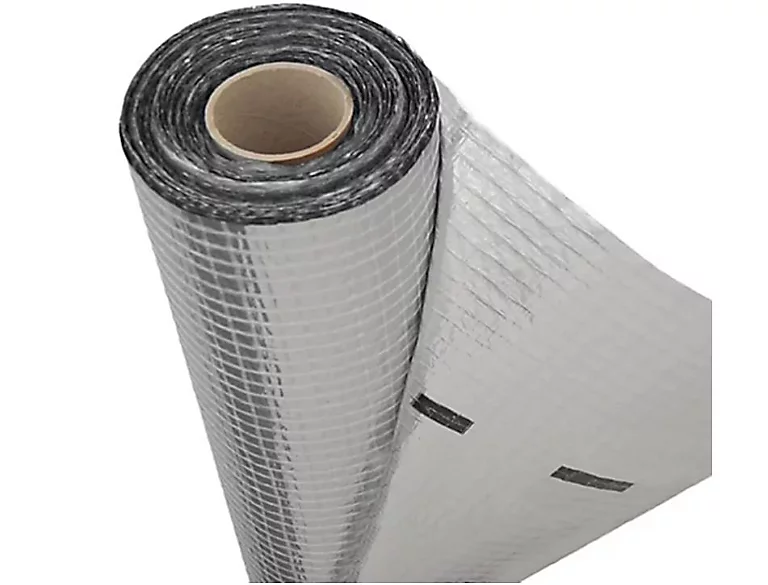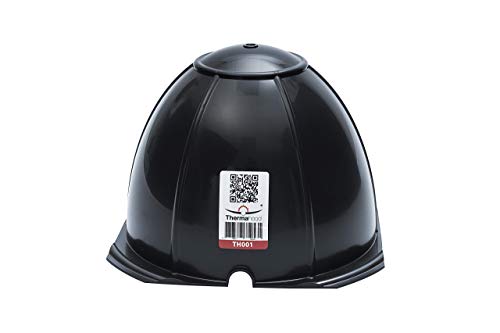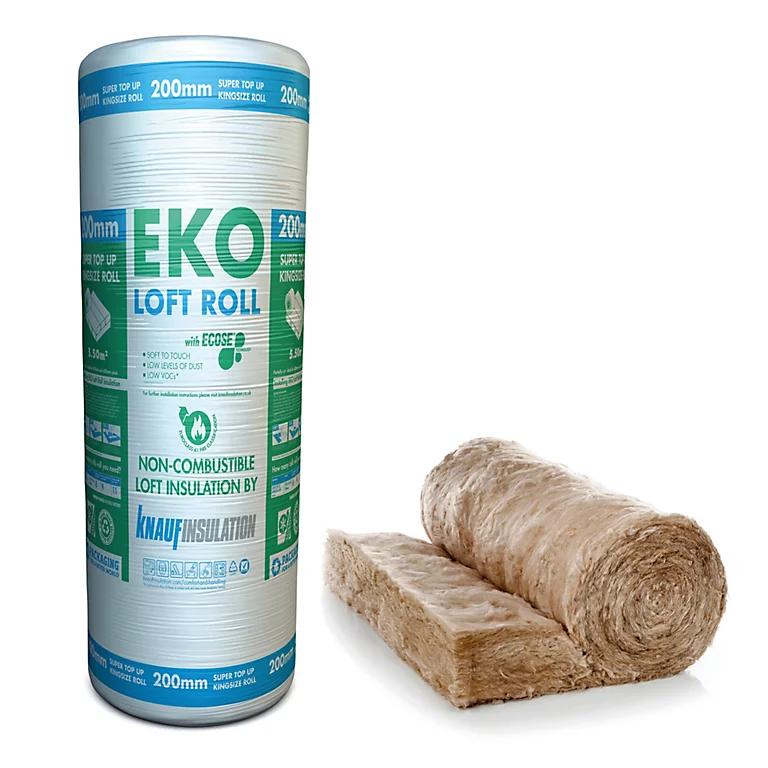The 6 areas of your home never to insulate and the damage it could cause if you do
Our straightforward guide covers six areas in the home where insulation should be avoided or approached with caution. Here's why

Insulating your home is one of the best ways to improve its energy efficiency, keeping warmth in during the winter and your living spaces cool in the summer. But while well-installed insulation can lead to significant savings on your heating bills, there are some areas where adding insulation can do more harm than good – to both your wallet and the fabric of your home.
In certain spaces, the risks of placing insulation incorrectly can outweigh the potential benefits. For example, insulating areas prone to moisture can lead to problems such as dampness and mould growth, which not only damage your home but can also negatively impact your health.
Understanding these risks is essential for making informed choices about where – and where not – to insulate your home.
6 areas of your home you shouldn't insulate
This straightforward guide will cover the specific areas in the home where insulation should be avoided or approached with caution. From unventilated loft spaces to damp and moisture-prone basements, we’ll look at each area’s unique concerns and suggest some alternative solutions for retaining heat and protecting your home from the elements.

Need more advice or inspiration for your project? Get two free tickets to the Homebuilding & Renovating Show.
1. Moisture-prone basements or crawl spaces
Insulating moisture-prone areas such as basements or crawl spaces may seem like a good way to improve your home's energy efficiency, but it often leads to bigger issues down the line. When moisture isn't managed properly, it can become trapped within a structure, leading to mould growth, which poses health risks and can also compromise your home's structural integrity.
For example, insulating a concrete floor or a crawl space without addressing underlying damp problems can result in moisture seeping through, leading to mould on the insulation and adjacent surfaces. The UK government's Solid Floor Insulation: Guide to Best Practice highlights that solid floors are typically moisture-closed, meaning a damp-proof membrane will need to be introduced prior to insulating these surfaces to prevent moisture-related issues. Without this precaution, any existing damp in the floor or surrounding area can permeate the insulation and cause condensation.
Similarly, cellars and unventilated utility rooms are often prone to damp, due to their below-ground location and limited airflow. To avoid these problems, conduct a thorough moisture assessment and address any existing damp issues first. This might involve improving drainage, sealing cracks, or applying waterproof coatings. Once treated, install a damp-proof membrane beneath the insulation to act as a barrier against future moisture ingress.

This aluminium foil membrane is suitable for use in walls, floors and roofs. Each roll measures 1m X 10m. It will act as a protective barrier between insulation and damp-prone surfaces.
2. Solid walls with no damp-proof course
"The relationship between insulation and damp is a complicated one," explains Joanna O’Loan, knowledge manager at the Energy Saving Trust. "There are occasional accounts of insulation being blamed for causing damp issues. However, this typically results from improper installation or choosing an unsuitable type of insulation for the home. That being said, it's important to understand that insulation alone won’t solve an existing damp problem either. In fact, it can sometimes worsen the issue or shift it to another area."
For example, Joanna highlights that a leaky roof might channel water down an open cavity. If you then install cavity wall insulation without addressing the leak, that water needs to find a new path, potentially exposing or aggravating a pre-existing issue. Older homes with solid walls that lack a damp-proof course therefore pose a unique challenge. Adding insulation to these walls without first addressing any existing issues can lead to something known as interstitial condensation – moisture trapped within the wall, causing internal dampness and potential long-term structural damage. This risk is especially high in Victorian properties where a modern damp-proof course might not be present.
To avoid these issues, before insulating a wall you should asses and treat your walls for underlying moisture issues. Otherwise, you may insulate your internal walls only to find persistent damp patches and peeling plaster emerging soon after.

In her role as part of the insight and evaluation team, Joanna O’Loan makes sure the Energy Saving Trust translates its research into practical and actionable advice for UK homeowners.
3. Electrical boxes, wiring, and lighting
Electrical boxes, wiring, and lighting fixtures are all components that you don't want to cover with insulation. Doing so can trap heat, create fire hazards, or lead to electrical issues. For example, if insulation is placed too close to recessed lighting without an insulation cover, it can quickly overheat and become a fire risk.
Insulating these components can also prevent them from functioning as intended. For instance, wiring that is surrounded by insulation may not be able to dissipate heat properly, potentially leading to damage over time or even electrical failures. Covering junction boxes can also make future electrical work difficult and may violate building codes that require easy access for inspection and repairs.
To avoid these problems, make sure you leave a safe gap between insulation and any electrical elements or use protective barriers that allow for proper airflow. This simple step helps prevent safety issues while still keeping your home energy-efficient.

Thermahood Downlight covers are designed with safety in mind, being made from self-extinguishing flame retardant material to reduce fire risk
4. Areas near water pipes without consideration for access
In the same vein as electrical components, insulating too close to water pipes or plumbing systems can create complications down the line. If pipes are insulated without leaving room for access, maintenance can become a challenge, and any potential leaks may go unnoticed.
Hidden leaks can lead to undetected water damage, mould growth, and even structural issues, so avoid these problems by keeping water pipes accessible and applying insulation to these areas thoughtfully, leaving space for inspections and repairs when needed.
5. Loft spaces without ventilation
Loft insulation is one of the most effective ways to improve your home’s energy efficiency, but if you don't have adequate loft ventilation, insulating these spaces can create more problems than it solves.
Without sufficient airflow, moisture from the living spaces below can rise and condense on cooler loft surfaces, soaking into wooden elements and causing structural damage and decay. Therefore, the Energy Saving Trust advises that insulation should not be installed where it is likely to block existing ventilation points, such as eaves or soffit vents, as this can lead to loft condensation and damp issues. In addition to these measures, loft hatches should be draught-proofed to stop warm, moist air from entering and exacerbating these problems.
Inadequate insulation coverage or gaps around structural beams in your loft can also cause thermal bridging, where heat escapes through poorly insulated areas. This can lead to temperature fluctuations and moisture build-up, further reducing the effectiveness of your insulation. To avoid thermal bridging, ensure that insulation is continuous and overlaps properly, covering potential gaps around beams and edges. Using high-quality insulation materials and working with a professional to assess hard-to-reach areas can also help maintain consistent coverage.
6. Around chimneys and flues
Always exercise caution when insulating areas near to chimneys and flues, as insulation too close to these heat-generating structures can pose a serious fire risk and may also hinder airflow.
The Department for Levelling Up, Housing and Communities (DLUHC) advises maintaining a safe distance between insulation and heat sources. The DLUHC’s Approved Document B: Fire Safety suggests a minimum distance of at least 50mm between insulation and flue pipes or chimneys. This gap allows heat to disperse and prevents direct contact that could put your home at risk.
For added safety, you can also use fire-resistant materials, like mineral wool insulation, in areas near to chimneys or flues. When in doubt, always check current building regulations or consult a professional to make sure your insulation project is up to code.

This popular mineral wool insulation from Knauf is specifically designed for use in cold lofts at ceiling level. It is non-combustible and holds a Euro Class A1 Reaction to Fire classification.
FAQs
Should you insulate bathrooms?
Yes, it's generally a good idea to insulate bathrooms, as it can help maintain consistent temperatures and improve your homes energy efficiency. However, you need to exercise more caution in these spaces due to the higher moisture and humidity levels. Opt for moisture-resistant insulation in these spaces and always ensure you have adequate bathroom ventilation to prevent potential issues like condensation or mould.
Is it a bad idea to insulate your home yourself?
Your ability to insulate your home depends on your level of knowledge and DIY experience. In general, most homeowners can safely add loft insulation themselves. However, more complex projects like cavity wall or spray foam insulation typically require professional installation to ensure both safety and effectiveness..
There's no doubt that learning how to insulate your house is a smart way to boost energy efficiency and comfort. These 8 types of eco insulation are a good place to start your research if you want to explore your green options.
Get the Homebuilding & Renovating Newsletter
Bring your dream home to life with expert advice, how to guides and design inspiration. Sign up for our newsletter and get two free tickets to a Homebuilding & Renovating Show near you.

Gabriella is an interiors journalist and has a wealth of experience creating interiors and renovation content. She was Homebuilding & Renovating's former Assistant Editor as well as the former Head of Solved at sister brand Homes & Gardens, where she wrote and edited content addressing key renovation, DIY and interior questions.
She’s spent the past decade crafting copy for interiors publications, award-winning architects, and leading UK homeware brands. She also served as the Content Manager for the ethical homeware brand Nkuku.
Gabriella is a DIY enthusiast and a lover of all things interior design. She has a particular passion for historic buildings and listed properties, and she is currently in the process of renovating a Grade II-listed Victorian coach house in the West Country.
